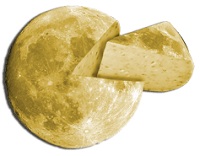 In a 2010 book, New Testament scholar Michael Licona said that the zombie apocalypse of Matthew 27:52, where many of the dead came back to life after Jesus died, didn’t literally happen. To many of us that’s an unsurprising observation, but this caused quite a controversy within the scholarly evangelical community.
In a 2010 book, New Testament scholar Michael Licona said that the zombie apocalypse of Matthew 27:52, where many of the dead came back to life after Jesus died, didn’t literally happen. To many of us that’s an unsurprising observation, but this caused quite a controversy within the scholarly evangelical community.
According to Christianity Today:
[Norman] Geisler accused Licona of denying the full inerrancy of Scripture. He also called for Licona to recant his interpretation, labeling it “unorthodox, non-evangelical, and a dangerous precedent for the rest of evangelicalism.”
“Recant”? Is this the Inquisition? Was Licona, like Galileo, shown the instruments of torture and encouraged to choose the correct path?
To be clear, the only objectionable item in Licona’s entire 700-page book was the reinterpretation of this one incident in Matthew, and yet he was pressured out of his job as professor at Southern Evangelical Seminary (SES), and his position as apologetics coordinator for the North American Mission Board was eliminated. A single question about biblical inerrancy was, for some, intolerable.
The other side of the issue
We can try to see this from the standpoint of SES. They have a purpose statement, which says in part that the institution assumes “the infallibility and inerrancy of the Scriptures.” Licona was likely asked to commit to this statement, and his book could be seen as a breach of this commitment.
These kinds of statements of faith are common, and I found them for Bob Jones University, Jerry Falwell’s Liberty University, and others. I attended the International Academy of Apologetics in 2011 (admittedly an odd place for an atheist to be for two weeks, but that’s another story), and their statement of faith, binding on the faculty, said that the Academy “accepts the Holy Scriptures as the revealed and inerrant word of God.”
Biola has a statement of faith that students must sign. No pretense of free intellectual inquiry here—students must accept the conclusions before their first lecture. In a scene vaguely reminiscent of the Inquisition, in 1997 Biola put three suspect faculty members “through multiple interviews to gauge their adherence to Biola’s doctrinal stances.”
Unexpected consequences
Let’s grant that a university can dismiss a professor for breaching a contract, even one so odd as the one at Licona’s former home. What’s rarely discussed is the consequence of these mandatory statements: they mean that Christian scholars at evangelical institutions are unable to be objective. With their job on the line, their hands are tied. They can’t always follow the facts where they lead. The public pillorying of Licona shows the consequences of intellectual honesty.
This incident has opened my eyes. Whenever I see or hear claims by Christian scholars, I will now wonder if a statement of faith applies. The next time I read an article by William Lane Craig, for example, I will read it with the caveat that he’s bound by Biola University’s doctrinal statement that says, in part, “The Scriptures … are without error or defect of any kind.” When he argues that the Bible is accurate, I won’t know if that’s really his honest conclusion or if that’s just his institution talking.
This even affects Norm Geisler, Licona’s chief accuser. Geisler is a professor at Veritas Evangelical Seminary, whose statement of faith says, “We believe the Bible … is verbally inerrant in the original text.”
How can we take seriously anything said about Christianity by Craig, Geisler, or indeed any scholar who is intellectually constrained in this way?
A thorough reading and understanding of the Bible
is the surest path to atheism.
— Donald Morgan
(This is a modified version of a post originally published 11/14/11.)
Photo credit: Vectorportal

 Remember Uri Geller? He was the psychic (or entertainer) who bent spoons and performed similar demonstrations in the 1970s and later. He claimed that extraterrestrials gave him paranormal powers, but wet blankets like stage magician James Randi stated that all of Geller’s claimed paranormal demonstrations were done with conventional stage magic. Randi showed this by publicly duplicating all of Geller’s tricks.
Remember Uri Geller? He was the psychic (or entertainer) who bent spoons and performed similar demonstrations in the 1970s and later. He claimed that extraterrestrials gave him paranormal powers, but wet blankets like stage magician James Randi stated that all of Geller’s claimed paranormal demonstrations were done with conventional stage magic. Randi showed this by publicly duplicating all of Geller’s tricks. In 1917, two girls spent much of their summer playing by a stream. Repeatedly scolded for returning home wet and muddy, they said that they were playing with fairies. To prove it, they borrowed a camera and returned claiming that they had proof. That photo is shown here.
In 1917, two girls spent much of their summer playing by a stream. Repeatedly scolded for returning home wet and muddy, they said that they were playing with fairies. To prove it, they borrowed a camera and returned claiming that they had proof. That photo is shown here. Easter has recently passed, and I’d like to rerun a post on the resurrection.
Easter has recently passed, and I’d like to rerun a post on the resurrection.